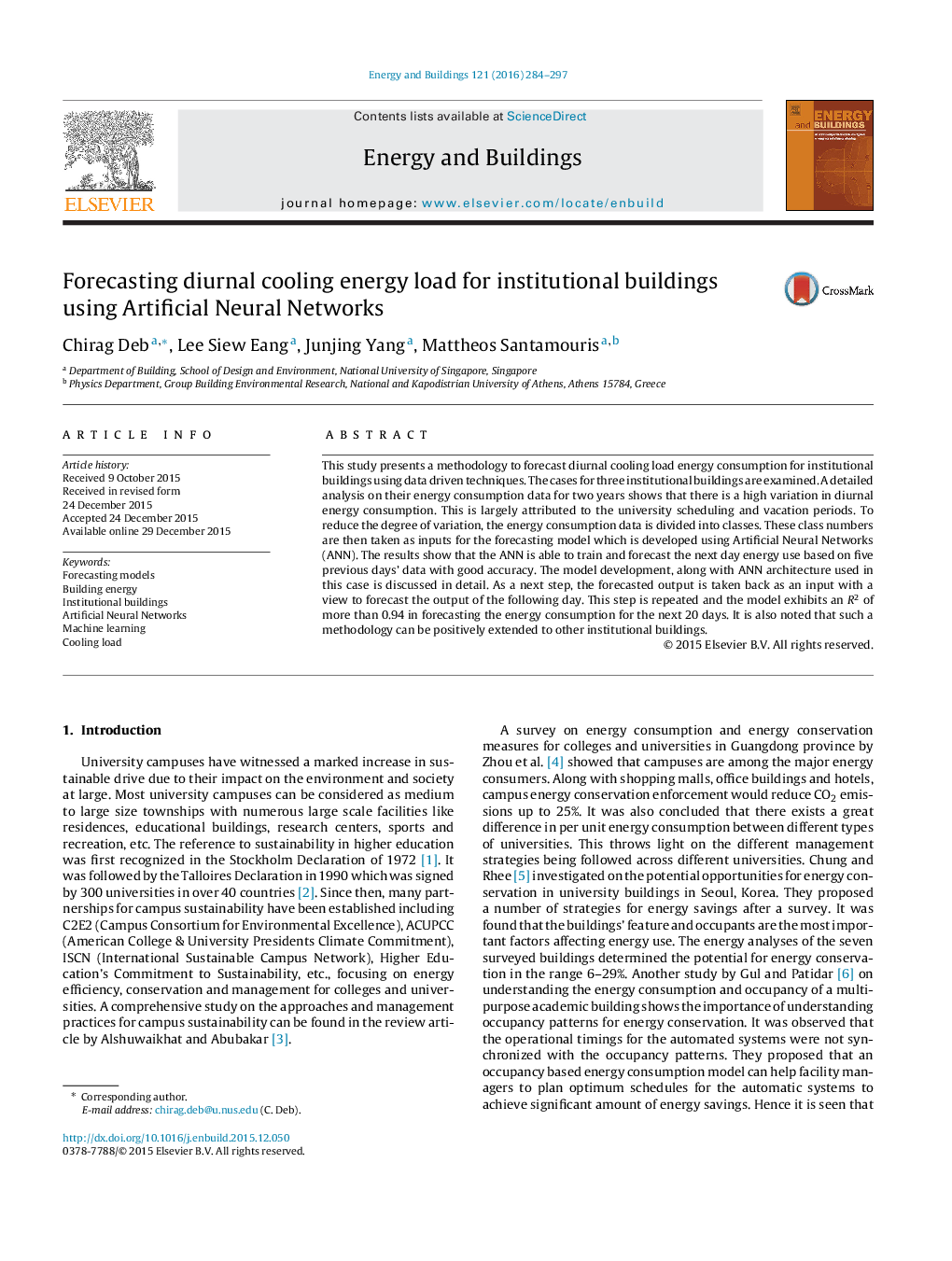| کد مقاله | کد نشریه | سال انتشار | مقاله انگلیسی | نسخه تمام متن |
|---|---|---|---|---|
| 262192 | 504014 | 2016 | 14 صفحه PDF | دانلود رایگان |
• A methodology to accurately forecast diurnal cooling load for institutional buildings is presented.
• The forecasting model is developed using Artificial Neural Networks (ANNs).
• The analysis is performed on cooling load data recorded over a period of two years.
• The high variation in the load is reduced by introducing energy classes.
• The developed ANN model can accurately forecast the cooling load classes for next 20 days.
This study presents a methodology to forecast diurnal cooling load energy consumption for institutional buildings using data driven techniques. The cases for three institutional buildings are examined. A detailed analysis on their energy consumption data for two years shows that there is a high variation in diurnal energy consumption. This is largely attributed to the university scheduling and vacation periods. To reduce the degree of variation, the energy consumption data is divided into classes. These class numbers are then taken as inputs for the forecasting model which is developed using Artificial Neural Networks (ANN). The results show that the ANN is able to train and forecast the next day energy use based on five previous days’ data with good accuracy. The model development, along with ANN architecture used in this case is discussed in detail. As a next step, the forecasted output is taken back as an input with a view to forecast the output of the following day. This step is repeated and the model exhibits an R2 of more than 0.94 in forecasting the energy consumption for the next 20 days. It is also noted that such a methodology can be positively extended to other institutional buildings.
Journal: Energy and Buildings - Volume 121, 1 June 2016, Pages 284–297
